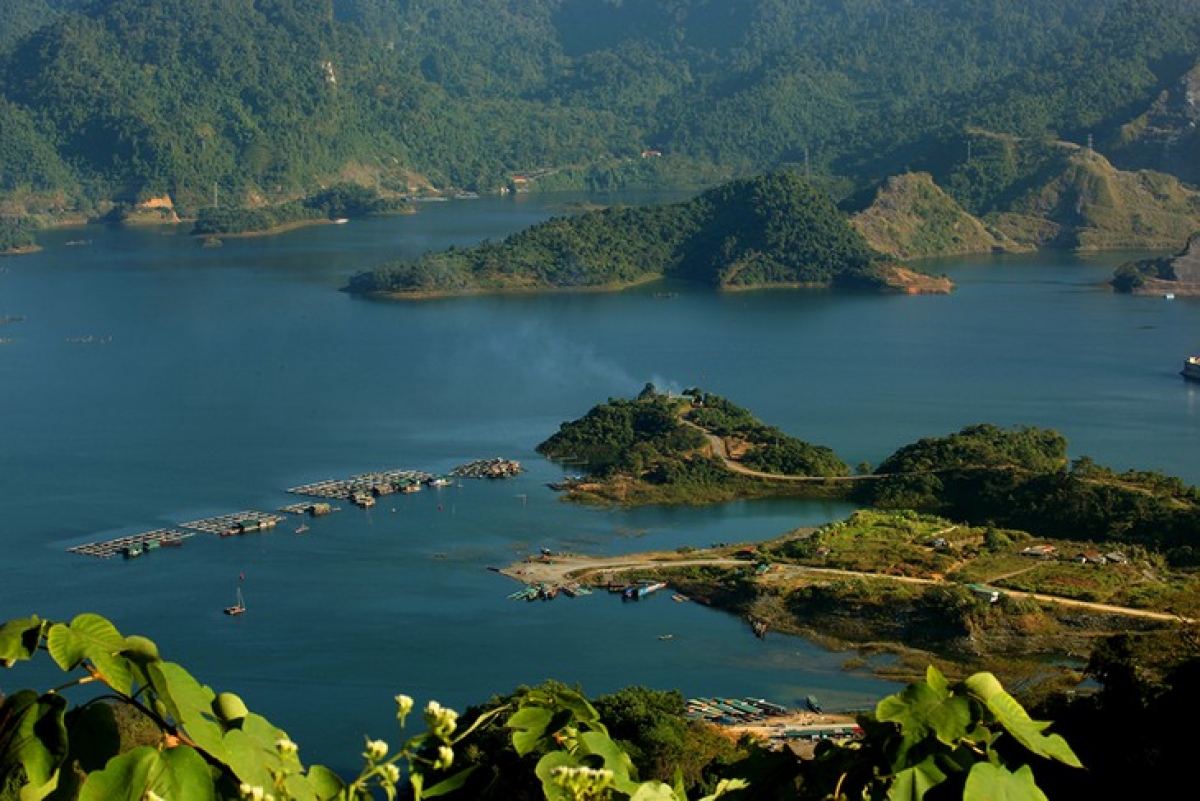Lam Binh district in Vietnam’s northern province of Tuyen Quang stuns visitors with its diverse ecosystem and a majestic landscape of river, mountains, and forests, this area was inhabited by the ancient Viet people.

Na Hang - Lam Binh lake (Photo: baotuyenquang.com.vn)
Axes, pickaxes, and arrows made of stone and bronze and ceramic pieces have been excavated by archeologists in Lam Binh district. Pu Bao temple and Phuc Lam pagoda are among religious structures that date back thousands of years in Lam Binh district.
Traces were found in Phia Vai cave in Lam Binh district which are thought to come from an 8,000-year-old stove used by a clan of ancient Viet people. Burial tombs were also discovered there.
Cao Van Minh, Chief of Lam Binh district’s Culture and Information Office, said, “Archeologists believe that ancient Viet people lived in Phia Vai cave around 12,000 years ago. They lived near rivers and streams and other water sources.”
Limestone mountains stretching to the horizon and the amazing caves inside them are tourism draws for Lam Binh district, which has shot to popularity because of Khuoi Pin cave, Song Long cave, Khuoi Nhi waterfall, and Nam Me waterfall.
Na Hang-Lam Binh lake features a rich ecosystem. The lake is dotted by numerous islets. The Na Tong field surrounded by 99 mountain peaks in Thuong Lam commune is touted as “Ha Long Bay in the mountains”.
Minh added, “The newly discovered Khuoi Pin cave has awe-inspiring stalagmites and stalactites and spring water flowing through. On their visit to Nam Me waterfall, upon request, visitors are taken into primeval forests. At Khuoi Nhi waterfall, a school of ‘massage’ fish nibbles at the feet visitors dangle in the water. Next, the tour guide leads them through the dramatic Song Long cave that borders Ha Giang province.”
Vibrant cultural rituals and festivals of ethnic minority people add additional charm to Lam Binh district. Local authorities have revived the Long Tong (going to the field) festival of the Tay minority group and the fire dancing festival of the Pa Then group. Both have become popular new year attractions.
Chau Thanh Nga, a Lam Binh resident, noted, “Visitors to Lam Binh district learn about our culture and daily activities. The costumes, life inside stilt houses, farming practices, delicious food, and folk songs are all alluring to visitors. The Tuyen Quang hydroelectric plant should not be missed on a trip to Lam Binh.”
Dozens of households in the district offer homestay service. Each village has a community-based tourism site which tries to deliver a variety of experiences in a single destination.
Chau Minh Vy, a homestay provider, said, “The cuisine of the Tay, Dao, and Mong includes rice in bamboo tubes, free-range chicken, fermented pork, smoked buffalo meat, grilled spring fish, and tea. Tourists enjoy helping us make and then taste our traditional rice cakes.”
Tourism has been defined a key contributor to Lam Binh district’s economic development.